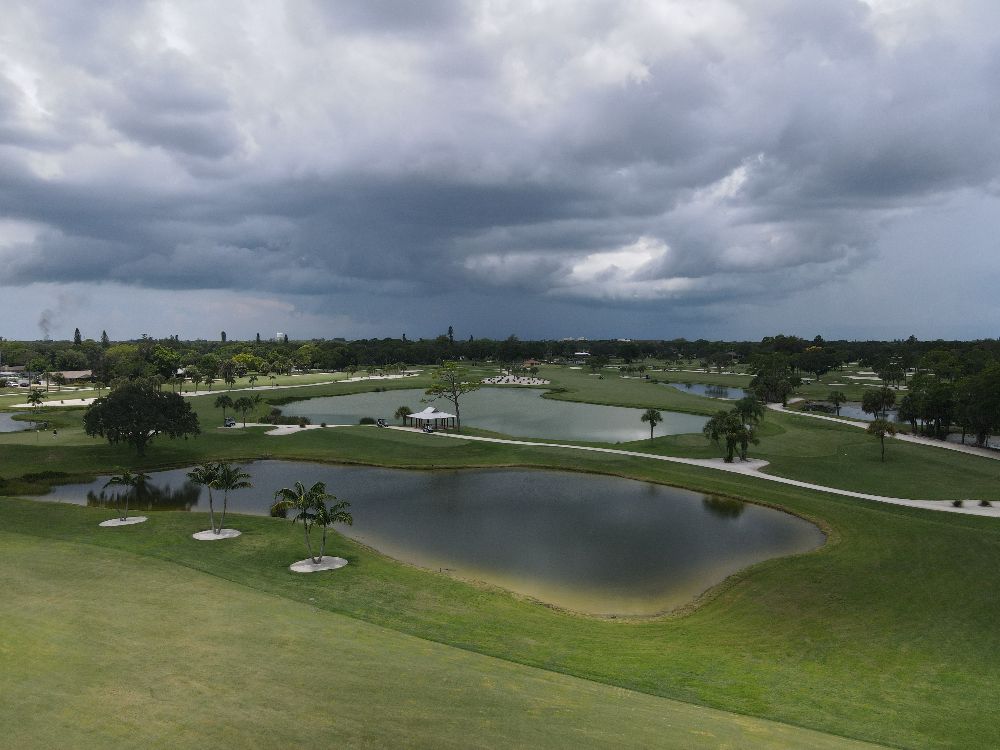TAMPA, Fla. - With clocks “springing” ahead, days lasting longer, and the sun beginning to peak out from behind the clouds, golfers around the country are rejoicing at the increase in opportunities to tee it up. This change in season has been especially welcome in the state of Florida where golfers and golf courses had to suffer through one of the cloudiest, coldest, and wettest winters yet. In fact, the central and southern regions of the state experienced their cloudiest winters since 1940 and 1941, respectively.

The last time an El Niño pattern was present was the winter of 2018-2019. For the last four years a La Niña pattern has been observed. This interaction has an opposite effect, meaning colder temperatures in the Pacific Ocean push the jet stream further north, creating drier and warmer conditions across the southern half of the country.
To understand more about El Niño and the effect it has had on golf courses in Florida we spoke with Darren Davis, the superintendent at Olde Florida Golf Club in Naples since 1991. Davis is a former President of the Golf Course Superintendents Association of America (GCSAA) and has worked on the agronomy staff at Golden Eagle Country Club, Augusta National Golf Club, and The Loxahatchee Club.
As a result of the La Niña patterns, the weather in south Florida these last winters was exceptional. However, according to Davis, the reduced sunlight and cooler temperatures experienced this year resulted in turfgrass growth quickly and drastically declining in late November. This was especially true for Bermuda grass, the most commonly used surface in Florida, which requires sunlight and heat to flourish. Growth regulation was halted, the height of cut on greens and fairways was increased, and mowing frequency was reduced. This created the advantages of reduced stress, increased leaf tissue (which helps with photosynthesis), and deeper rooting. However, low levels of sunlight, cooler temperatures and moist conditions combined to weaken the plant and create a desirable habitat for pathogens, amplifying disease pressure this winter. Without sun a plant is unable to create food, and regardless of what inputs turfgrass managers provide or the management they perform, without sun, turfgrass does not survive.
So, what can golf courses do to counteract El Niño’s negative effects? During our interview, Davis informed us that the most important time to take action is actually the summer before an El Niño winter. “If you don't look bad in the summer you're not going to look good in the winter,” says Davis. By bad, the former GCSAA President means doing your cultural practices, “and it's a necessary evil, for lack of a better word.” While aerification, verticutting, and top dressing among other things can create undesirable conditions for golfers, they instead cultivate the most desirable conditions for turfgrass growth. Superintendents implement all of these cultural practices in the summer to go in as healthy as they can in the winter when play is heaviest and turfgrass growth is limited.
to take action is actually the summer before an El Niño winter. “If you don't look bad in the summer you're not going to look good in the winter,” says Davis. By bad, the former GCSAA President means doing your cultural practices, “and it's a necessary evil, for lack of a better word.” While aerification, verticutting, and top dressing among other things can create undesirable conditions for golfers, they instead cultivate the most desirable conditions for turfgrass growth. Superintendents implement all of these cultural practices in the summer to go in as healthy as they can in the winter when play is heaviest and turfgrass growth is limited.
Now that spring has begun, according to Davis, conditions are going to improve daily, so long as these cultural practices were performed last year. A number of courses are still looking at the scars of El Niño, and it will still be some time until they are fully recovered. But with more sunlight being added to the end of every day now that the winter solstice is in the rear-view mirror, Davis tells us, “nutrients being applied to the course are finally released into the plants because of the increased sun exposure, ultimately resulting in increased photosynthesis, greener grass, and healthier golf courses.”
To those eagerly waiting for these improved conditions, Davis’s message is clear. “Be understanding and patient, and know that your superintendent is doing anything he or she can do to provide you with the best conditions. We're all wired the same. My passion is to make people happy, give them a quality playing surface, and for people to have fun.” Golfers all around the state should be getting their game prepared because brighter, and greener, days are ahead.





